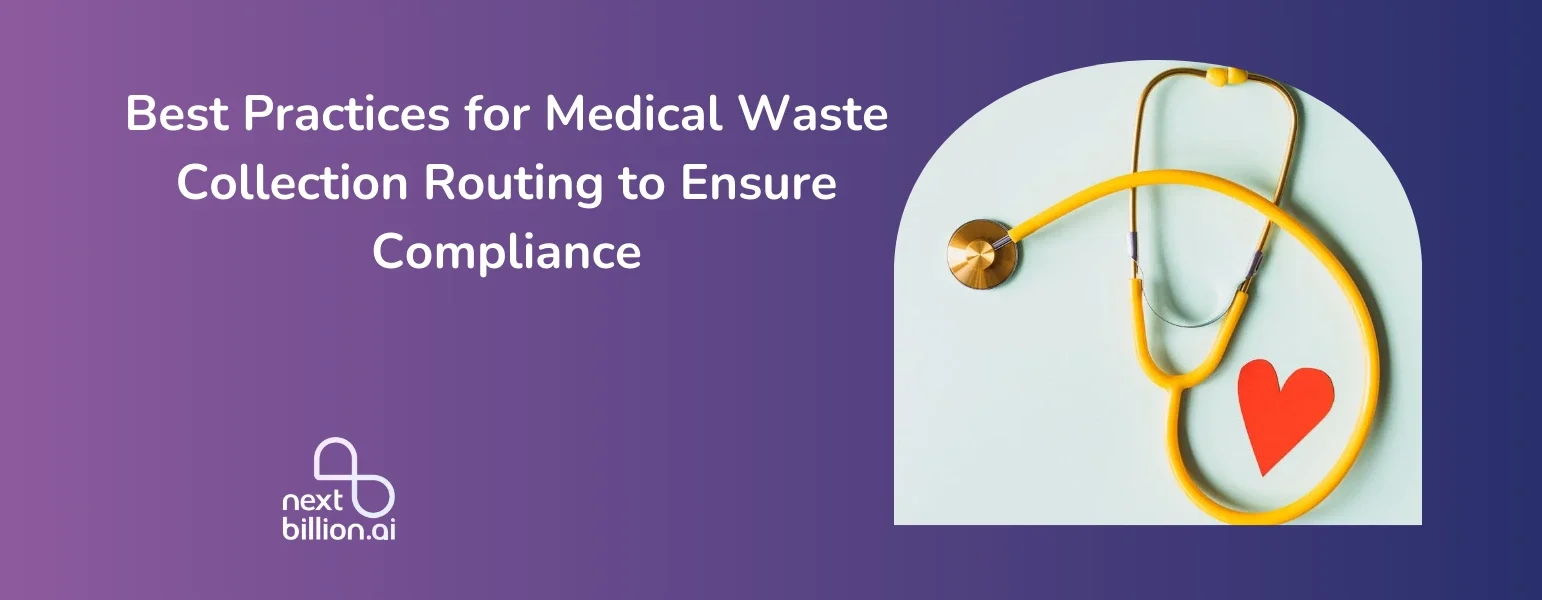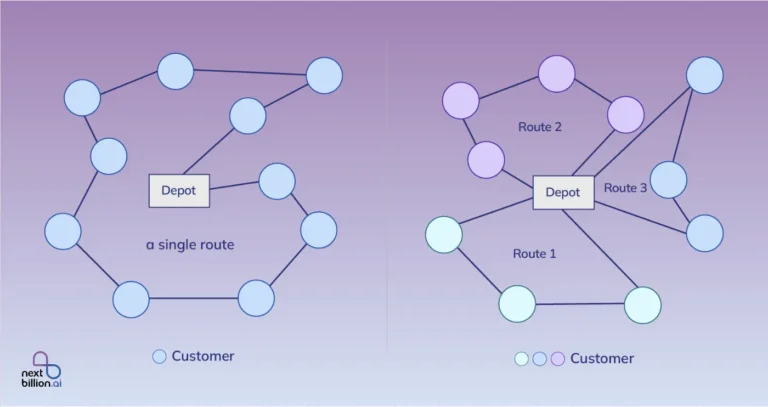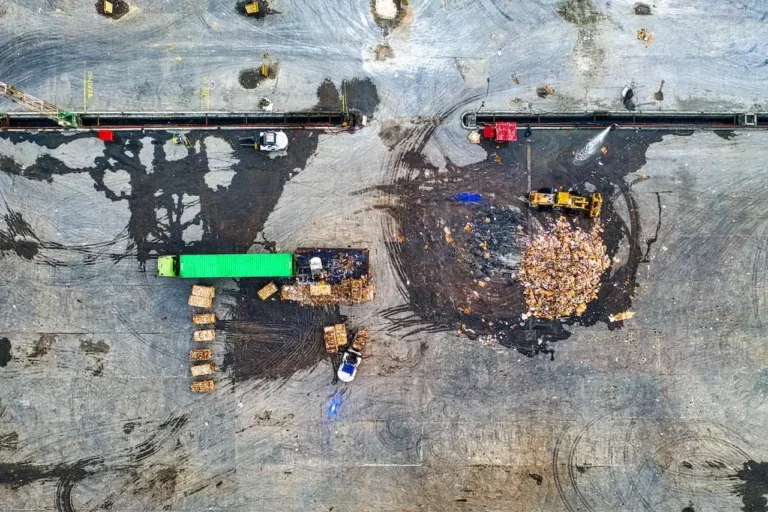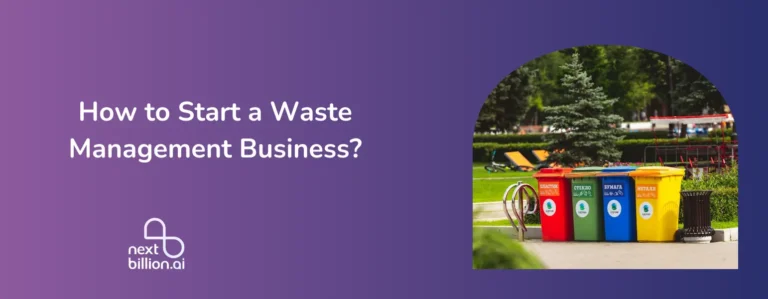
Table of Contents
Did you know that medical waste makes up about 2-3% of the total amount of waste in the world? Moreover, it is also considered one of the most hazardous waste materials. Medical waste dumps from different institutions contain toxic drugs, dangerous microorganisms, and radiological hazards. This is just a short overview of the associated risks. That is why this issue of waste disposal is taken very seriously all over the world.
Medical waste collection routes can help to transport medical waste efficiently without any risk of exposure to workers and the general public. A well-implemented medical waste collection system always ensures compliance with local, state, and federal laws. This enables organizations to avoid legal penalties and fines. Compliance with these regulations also reduces healthcare facilities’ liability in case of environmental crises that may result from improper waste management.
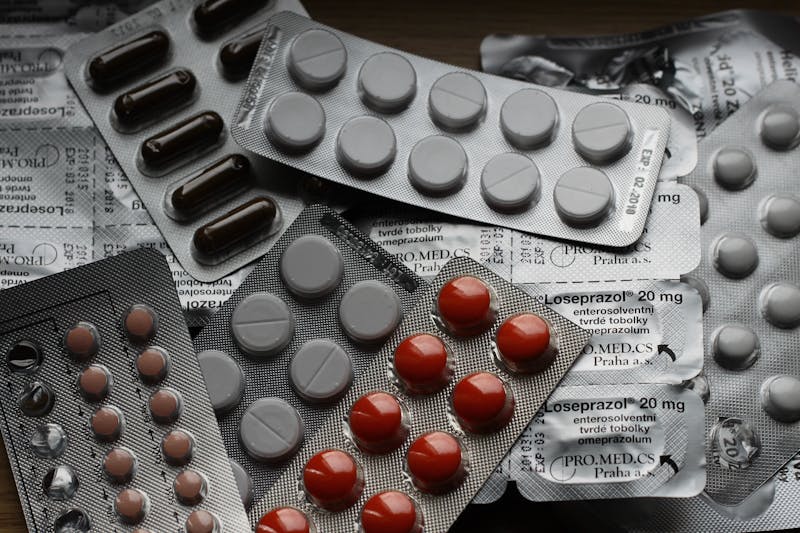
Treatment of Medical Waste and Disposal
Medical waste is healthcare waste contaminated by blood, body fluids, and infectious materials. It needs to be disposed of properly and precisely. It is often referred to as regulated medical waste.
Proper disposal is essential for discarded needles and sharps because its improper management can lead to problems for the public’s and worker’s health. For example, discarded needles may expose the waste collectors to needle stick injuries and the risk of passing an infection, like human immunodeficiency virus (HIV) and hepatitis. It can happen when containers break open in the garbage truck or if needles are sent to recycling factories.
The janitors or waste collectors may get hurt by needles if the needles poke out from the plastic bag as they try to pick up the waste and dump it. Here are some tips for safely dumping medical waste:
- Take the filled sharp containers or needles to appropriate collection sites, such as doctor’s offices, health clinics, and pharmacies. Some programs collect the sharps separately, preventing them from mixing with the usual waste.
- There are exchange programs where used needles can be exchanged for new needles. The community organization hosting the program ensures proper sharps disposal.
- Discarded needles and sharps can be collected in a special container, and the waste collection and pickup will collect them and send them for disposal.
Once the waste is collected, there are different ways to dispose it. Before 1977, more than 90% of the regulated medical waste, which was potentially infectious, was incinerated. However, In August of 1997, the EPA (United States Environmental Protection Agency) introduced regulations for creating stringent emission standards for medical waste incinerators. It was because of significant concerns on detrimental air quality, which can affect human health, due to incineration.
There are alternative methods to dispose of medical waste instead of incineration:
- Thermal treatment, like microwave technologies
- Steam sterilization, like autoclaving
- Electropyrolysis
- Chemical mechanical systems
With stringent EPA Hospital Medical Infectious Waste Incinerator (HMIWI) regulations, the adoption of alternative methodologies and technologies to dispose of regulated medical waste is increasing.
Understanding Medical Waste Regulations
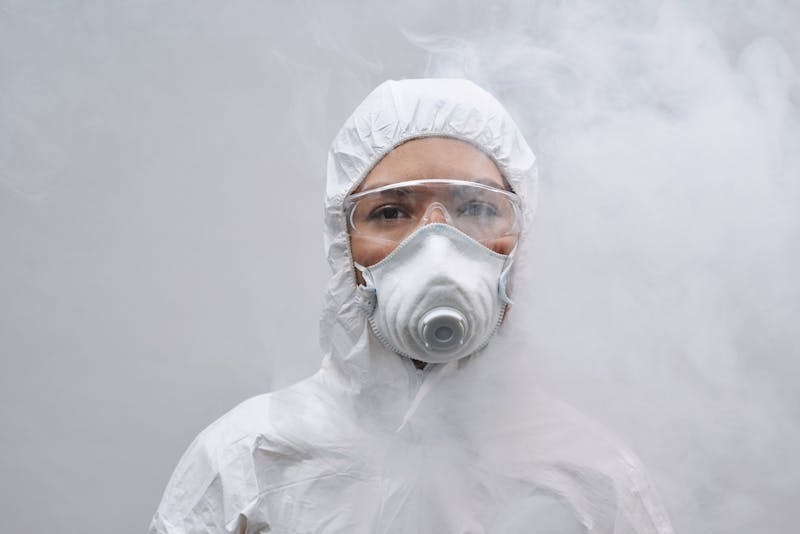
Many states have implemented strict medical waste disposal and management regulations, which require medical waste treatment technologies to be certified, licensed, and regulated. There are several regulations that reshaped the medical waste management regulatory landscape, like:
- EPA (Environmental Protection Agency) Regulations: The EPA regulates the handling, storage, transportation, and disposal of hazardous waste. It includes certain degrees of medical waste, and recent updates have made requirements more for hazardous waste generators. It aims to minimize waste generation, improve labeling, and introduce tracking protocols.
- OSHA (Occupational Safety and Health Administration) Standards: OSHA standards govern workplace safety and health hazards caused by improper handling of medical waste, which can lead to exposure to bloodborne pathogens. The latest updates in OSHA standards focus on enhancing workers’ protection, providing essential training to dispose the waste properly, and implementing exposure control measures in healthcare settings.
- HIPAA (Health Insurance Portability and Accountability Act) Compliance: HIPAA regulations govern the privacy and security of Protected Health Information (PHI). They also impose strict regulations on disposing of PHI-containing materials safely and securely so that it doesn’t end up in the wrong hands.
- State and Local Regulations: Every state has local regulations to govern medical waste management, which include licensing, registration, and reporting guidelines. For example, in New York, medical waste generators must register and obtain permission from the New York State Department of Environmental Conservation (NYSDEC).
In California, the Medical Waste Management Act regulates the generation, handling, storage, treatment, and disposal of medical waste. It also ensures that healthcare entities generating medical waste are registered with the California Department of Public Health (CDPH).
Compliance with local, state, and federal standards is crucial for all healthcare institutions. This enables everyone to ensure the safe handling, transportation, and disposal of medical waste dumps. Adhering to these regulations minimizes the risk of contamination, disease transmission, and environmental damage.
Amidst medical waste management and disposal, it is essential to understand that medical waste collection routes also play a significant importance in complying with the regulations.
How Medical Waste Collection Routes Play a Significant Role in Complying with Regulations?
According to an EPA report, transportation accounts for 28% of total US greenhouse gas emissions, making it one of the largest contributors to the country’s greenhouse gas emissions increase. Hence, medical waste collection routes play a significant part in reducing environmental effects and properly transporting medical waste to the disposal center to avoid any risk due to improper management.
Let’s understand how optimizing medical waste collection routes can help:
- Optimized routes ensure that the waste is collected promptly and disposed of within the time limit to prevent any contamination or public health risks. WHO and EPA regulate and specify the time limit for the safe collection and disposal of medical waste collection. Exceeding the time limits can lead to the imposition of heavy penalties.
- Medical waste includes hazardous materials, like sharps, infectious materials, and pharmaceutical by-products. Optimized routing ensures this regulated medical waste is transported quickly and safely, reducing the risk of exposure to waste handlers, healthcare staff, and the general public.
- Optimized routes reduce travel time, idle time, and fuel consumption, making the collection process aligned with environmental regulations to limit greenhouse gas emissions.
- Well-planned routes reduce the likelihood of operational errors, like missed pick-ups or incorrect drop-offs, which could lead to violations of waste disposal regulations.
- Waste collection companies can efficiently allocate resources like garbage collection trucks, drivers, and staff to eliminate unnecessary expenses due to improper routes, like re-trips, because some pick-up points were missed.
- Route optimization includes geofencing to avoid restricted zones with stringent local waste management rules, ensuring that transportation remains compliant.
So, as a medical waste collection company, your fleet management should have a set of high-tech tools to streamline the routes and operations.
How to Optimize the Medical Waste Collection Routes?
Let’s see how technology can help to optimize the medical waste collection routes:
Step 1. Assessing Current Waste Collection Practices
Understanding the current medical waste collection practices is necessary to determine their environmental impact. The analysis also helps identify any gaps in compliance or inefficiencies in medical waste collection routes. It further assists healthcare institutions in adopting eco-friendly disposal methods like AI route optimization to ensure that waste collection aligns with local, state, and federal regulations.
Step 2. Identifying Medical Waste Generation Points
Effective management of medical waste is a multifaceted challenge that requires innovation, collaboration, and commitment from stakeholders across the healthcare and waste management sectors. Most importantly, it is necessary to identify all medical waste generation points to ensure everyone is working towards the same goal of achieving sustainability across the healthcare sector.
First of all, the healthcare facilities include several locations that generate medical waste annually. Hence, a waste collection fleet manager must analyze the following locations and the specific type of waste they generate to figure out an efficient way to discard them:
- Hospitals and Clinics (High volumes of varied waste, requiring frequent pickups)
- Laboratories (biohazardous or chemical waste necessitating specific disposal routes)
- Pharmacies (pharmaceutical waste that requires specialized handling and disposal)
- Long-term care facilities (produce non-hazardous waste, with occasional need for specialized disposal)
- Veterinary clinics (produce similar types of medical waste as human healthcare facilities, requiring appropriate collection)
Peak times for medical waste generation in healthcare facilities often align with periods of high patient activity and specific medical procedures. For instance, mornings and early afternoons may generate more waste because of routine surgeries, diagnostic tests, and patient rounds.
Emergency departments may also experience surges in waste during evenings and weekends. This applies specifically during flu seasons or public health emergencies. ICUs and COVID-19 wards also see spikes based on patient volumes and treatment protocols.
The waste collection team can determine these peak times of waste generation to optimize their medical waste collection routes efficiently.
Step 3. Implement Route Optimization Planner
Once you have collected all the data, you can implement the route optimization planner. An advanced route planner, like NextBillion.ai, considers different constraints, like pick-up sequence, priority pick, time limit, real-time road and weather conditions, traffic, and others, to provide optimized routes.
Let’s see how a route optimization planner helps in improving the medical waste collection routes. First of all, you will have to configure the following three things:
- Jobs and Shipment: In this context, jobs means the work the workers or staff will be performing and shipment means the waste to be collected. We start by defining 5 jobs and two shipments to be collected. For these tasks, you will have to add the following:
- Unique identifier of each task
- Location index for each task
- The time limit of the task within which the task should be performed (e.g., 15 minutes)
- Service time for each task (actual time taken to complete the task)
- Skills required to perform the task
- Pickup and delivery for all jobs.
- Vehicles: Vehicles mean the number of garbage trucks you aim to deploy on the streets for medical waste collection. Let’s start with four trucks, and for each truck, you will have to define the following attributes:
- Unique ID
- Vehicle shift time
- Total capacity to collect the waste
- Start_index to denote the starting point of the garbage truck
- Skills for all vehicles
- Locations: Now, using the locations object, you can add all the pick-up locations along with a valid ID to identify the locations easily.
Now, you have to submit the request to generate routes using the Optimization POST method and retrieve the solution. Your response will contain a unique ID, which will be used to obtain the original solution. The original solution will comprise a summary and an unassigned section.
The unassigned attribute mentions the pick-up points that were left to be included in the original solution. Sometimes, some pick-up points are left out for various reasons, like the location of pick-up points being out of the shift timings of both vehicles. You can run the route optimization planner again to optimize the route of the vehicles or deploy another vehicle to cover the left-out pick-up points.
How Does NextBillion.ai’s Route Optimization Work?
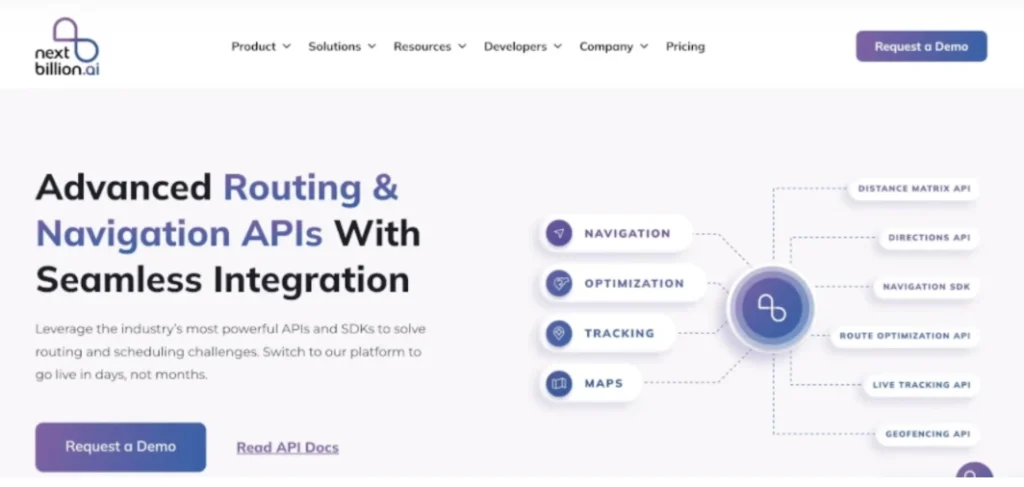
NextBillion’s Route Optimization planner uses a holistic approach that combines spatial analysis, route optimization, and efficient resource allocation. It divides the entire region into different regions using Voronoi tessellation. The non-intersecting polygons serve as a distinct region for waste collection.
Within each region, random locations are generated that serve as pick-up points, and each location is assigned a type of medical waste (emergency, non-emergency, hazardous, sharps, or non-hazardous). The types denote a different priority level, and then based on the bin capacities and truck capacities, a set of trucks is allocated to each region. The optimized routes aim to cover as many locations as possible, avoiding the need to reoptimize the routes again.
Medical waste regulation and management are necessary in today’s world to encourage an eco-friendly future among all healthcare facilities. That is why waste collection companies are encouraged to optimize their medical waste collection routes most sustainably. The process has also become easier with the latest advancements in technology. The best examples are route optimization software and solutions that help ensure that the medical waste disposal process is easy and efficient.
On that note, Nextbillion.ai already offers routing and navigation solutions for medical waste management that enable healthcare institutions to assess the efficiency of their collection routes. It also allows them to access personalized routing, streamlined task distribution, and precise ETAs for waste collection and disposal. Visit the website to learn more about the efficient waste disposal processes.
About Author
Bhavisha Bhatia
Bhavisha Bhatia is a Computer Science graduate with a passion for writing technical blogs that make complex technical concepts engaging and easy to understand. She is intrigued by the technological developments shaping the course of the world and the beautiful nature around us.





